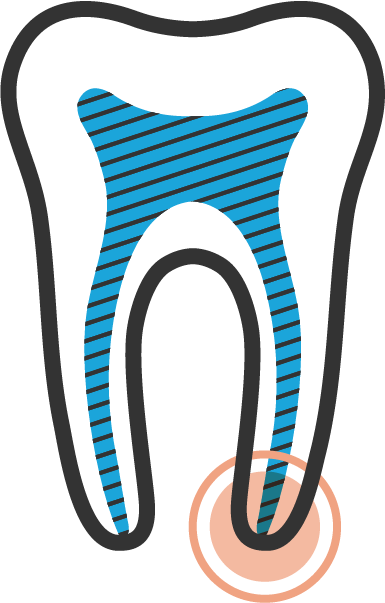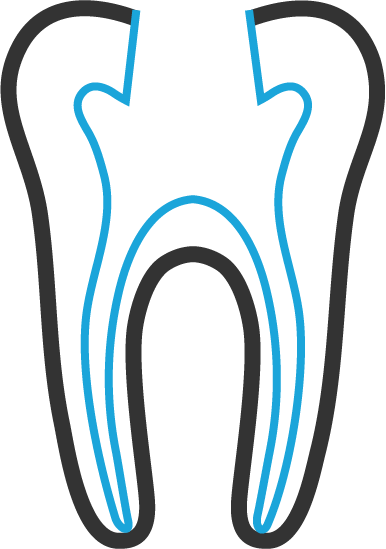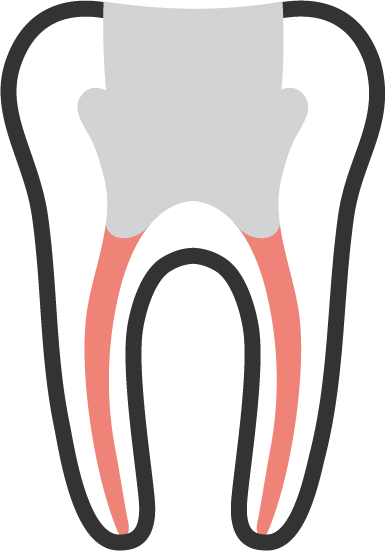Root Canal
A root canal is necessary when the pulp of your tooth becomes infected or inflamed from deep decay or an injury. First, we remove the injured or diseased pulp (inside of the tooth) and clean and shape the root canals. We then fill the root canal spaces with biocompatible materials. A temporary filling is placed to close the opening made to remove the pulp.

Infected or inflamed pulp may lead to an abscess.

Injured or diseased pulp is removed and root canals are cleaned/shaped.

Root canals are filled and a temporary filling is placed to close the opening in your tooth.
Signs and Symptoms
You may experience tooth pain when eating/chewing, sensitivity to hot or cold that lingers, or tenderness/swelling in your face or gums near the area of the painful tooth.
Pre-Op Instructions
You should not take pain medication 4-6 hours before your scheduled appointment to avoid masking any symptoms when we test the area. We will discuss the procedure in detail with you once the initial exam is done so you know exactly what to expect.
Post-Op Instructions
After your root canal treatment has been completed, the doctor will place a temporary filling on the biting surface of your tooth. A complete report of your root canal treatment, including digital images will be sent to your dentist.
- Do not chew on the side of your mouth that was treated for one hour.
- Your tooth may be sore and tender for several days following treatment.
- Over the counter pain medications such as ibuprofen (Advil), aspirin or acetaminophen (Tylenol) should be used as directed for post-operative discomfort.
- If you experience swelling or symptoms that concern you, please contact our office.
- Return to your general dentist as soon as possible for a permanent restoration to prevent fracture and/or further complications.
- Please return to us for a follow-up exam and digital image six months after your root canal treatment to evaluate the healing process of your tooth. We will send you a postcard as a reminder to schedule this appointment.
References
Are you interested in learning more details about your root canal treatment? These references from the American Association of Endodontics (AAE) are a great starting point.
AAE: Root Canals Explained
AAE: Root Canal Treatment: Step-by-Step